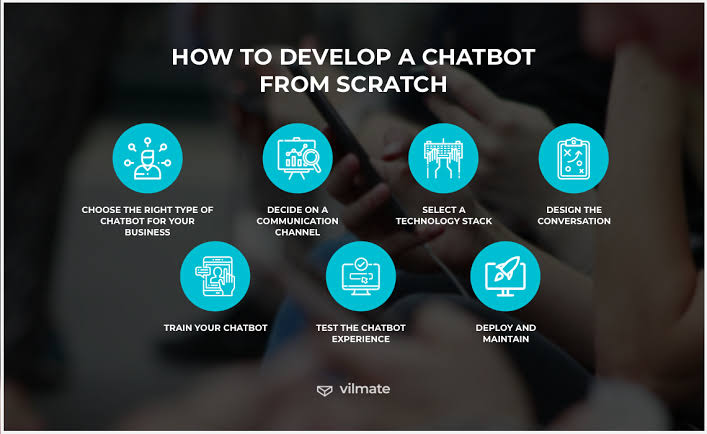Key Takeaways:
- Building a chatbot doesn’t require extensive coding experience.
- Understanding your goals and your audience is crucial for chatbot success.
- Various tools and resources are available to assist in creating a functional chatbot.
Table of Contents:
- Understanding Chatbots
- Planning Your Chatbot Project
- Choosing the Right Tools
- Development Process
- Testing Your Chatbot
- Deploying Your Chatbot
- Optimizing Chatbot Performance
- Looking Ahead: Future of Chatbots
Understanding Chatbots
Chatbots have evolved from simple scripted entities to advanced AI-driven platforms capable of understanding and processing complex queries in real-time. They simulate conversations through natural language processing (NLP) and machine learning, making them invaluable for instantaneous customer service and support. Integrating conversational AI API compatible with OpenAI enhances these interactions, providing nuanced and contextually relevant responses.
With the capacity to manage high volumes of text-based interactions, chatbots are increasingly being adopted across various retail, healthcare, and banking industries. Their growth is fueled by businesses seeking seamless, round-the-clock customer service while optimizing labor costs. By fielding routine inquiries and facilitating straightforward transactions, chatbots free up human agents to manage more complex issues, enhancing overall service efficiency.
Planning Your Chatbot Project
The foundation of a successful chatbot begins with meticulous planning. This involves articulating clear goals: What problems do you intend for the chatbot to solve, and how will it enhance your users’ experience? Identifying these objectives informs every aspect of the development process, from scripting dialogue to selecting the appropriate platform for deployment. Knowing your target audience and anticipating their needs is crucial—these insights dictate the tone, language, and functionality of your chatbot.
Furthermore, developing a comprehensive flowchart of potential user interactions helps anticipate common user queries and identify critical areas where the chatbot can add value. This planning phase might involve conducting user surveys or analyzing customer service data to effectively frame the chatbot’s operational scope.
Choosing the Right Tools
The selection of tools to develop your chatbot should reflect your project’s specific needs and technical capabilities. Tools range from no-code platforms for beginners to more sophisticated frameworks for developers experienced in programming.
Each tool has its own features, such as speech recognition, integration options, or machine learning capabilities. Evaluating these features in the context of your chatbot’s intended functionalities is key to choosing the best possible solution. This process often involves weighing the benefits of a user-friendly interface against the customizability and flexibility offered by more complex coding environments.
Development Process
The development phase is where your planning takes shape. Begin by crafting the chatbot’s conversational scripts. These scripts should include trigger phrases that initiate interactions, core responses, and FAQs. Including machine learning algorithms enables the chatbot to learn from interactions, improving accuracy and responsiveness over time. During this phase, developers should focus on building a robust backend capable of processing diverse natural language inputs.
Testing, iterating, and refining the chatbot is intrinsic to the development process. Consistent evaluation against real-world scenarios ensures the accuracy and reliability of the responses. Implement interactive elements and options to guide users through tasks such as querying information, completing transactions, or navigating through a website.
Testing Your Chatbot
Rigorous testing is essential to ensure your chatbot delivers a seamless user experience. This involves simulating various interactions to test its understanding of natural language inputs and its ability to provide relevant responses. Automated testing tools can simulate these interactions at scale, allowing developers to efficiently identify and address inconsistencies or errors.
User feedback during this phase is invaluable. Engaging real users in testing can provide insights into usability and functionality that automated tests might miss. Encourage testers to explore the chatbot’s capabilities fully, probing the limits of its responses and documenting areas for improvement. This feedback loop is crucial for fine-tuning the chatbot’s capabilities.
Deploying Your Chatbot
The deployment of your chatbot marks its transition from development to being an active part of your customer interaction strategy. Deployment involves integrating the chatbot with platforms where it will interact with users, such as websites, messaging apps, or social media networks. Testing the chatbot in the live environment before full-scale implementation is essential to ensure compatibility and effectiveness.
Informing users about the new chatbot and its functionalities can enhance adoption rates. Educating staff and users about engaging with the chatbot effectively will pave the way for successful interactions. Ensure there is a clear path for feedback collection, as user insights post-deployment are crucial for continuous improvement.
Optimizing Chatbot Performance
Optimization is an ongoing process involving continually analyzing user interactions to improve your chatbot’s effectiveness. Utilize data analytics to track performance metrics such as response accuracy, user satisfaction, and engagement rates. Optimization efforts might include expanding the database of potential queries, refining NLP algorithms, or incorporating additional features such as voice recognition.
Regular updates are vital to keep the chatbot relevant and responsive to changing user expectations or new company offerings. You can integrate new functionalities that enhance the user experience and maintain engagement by keeping abreast of technological advancements and user trends.
Looking Ahead: Future of Chatbots
The future holds vast potential for the evolution of chatbots, driven by advancements in AI and machine learning technologies. Emerging capabilities, such as understanding nuanced human emotions and engaging in richer conversational exchanges, are set to revolutionize how businesses and customers interact. This development points towards chatbots becoming more empathetic and intuitive, offering personalized support that transcends basic transactional interactions.
Businesses that leverage these advancements will gain a competitive edge by facilitating sophisticated interactions that anticipate user needs and preferences. By understanding and adapting to these technological shifts, companies can ensure their chatbots remain an effective and integral component of their customer engagement strategies.




